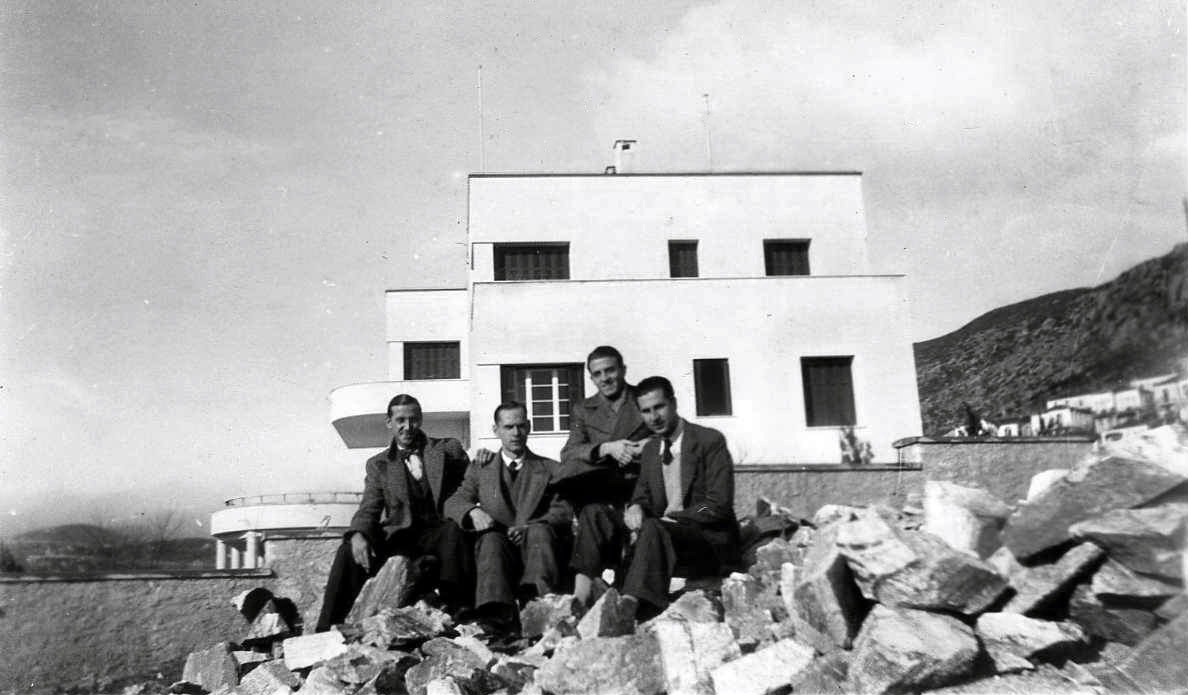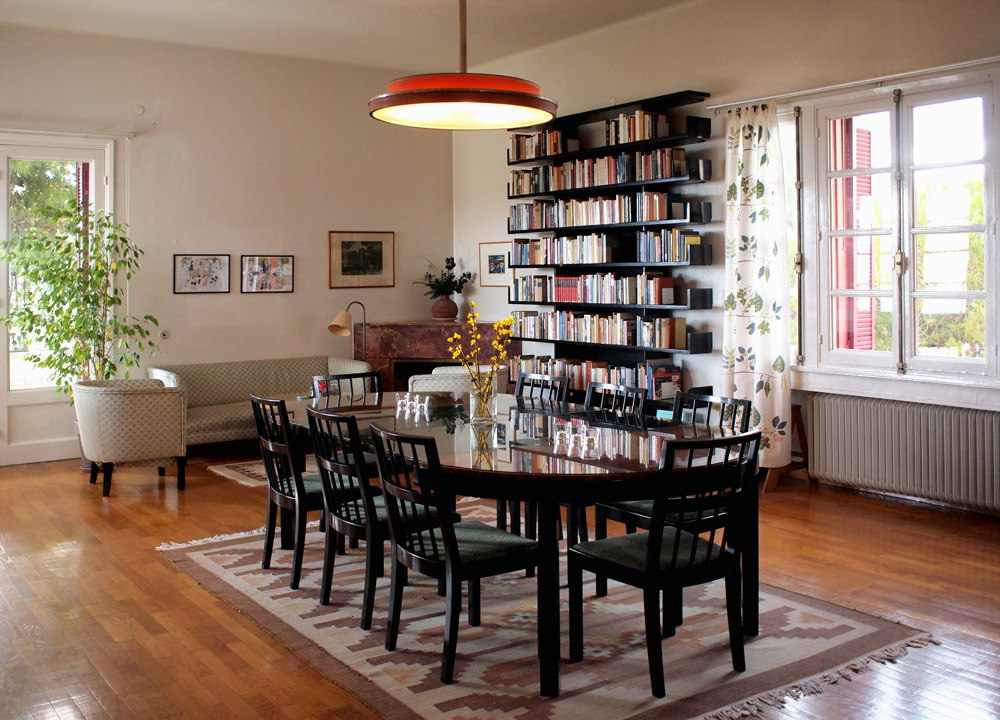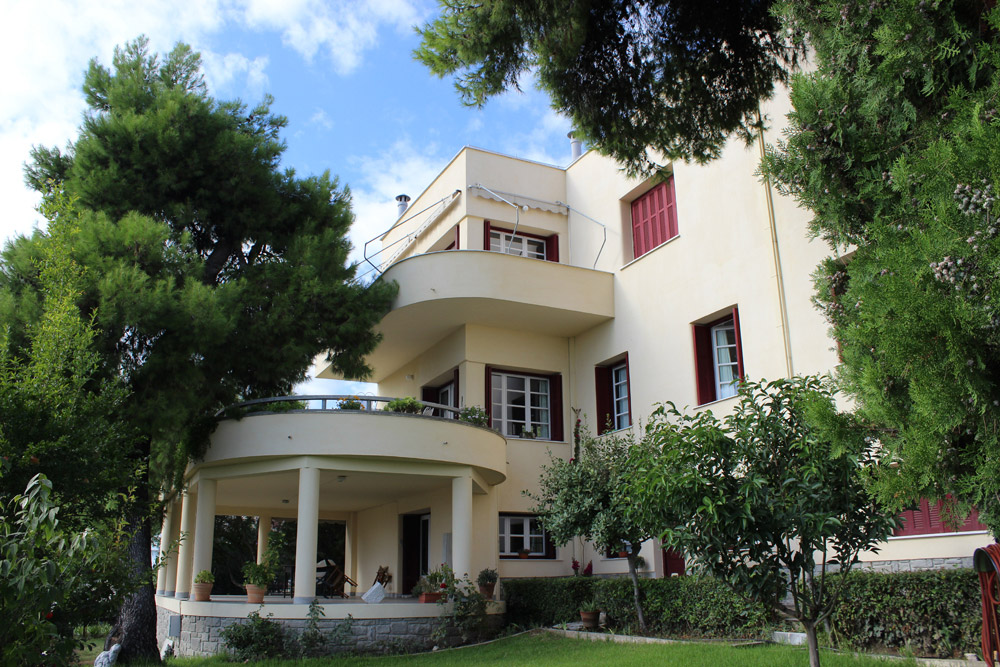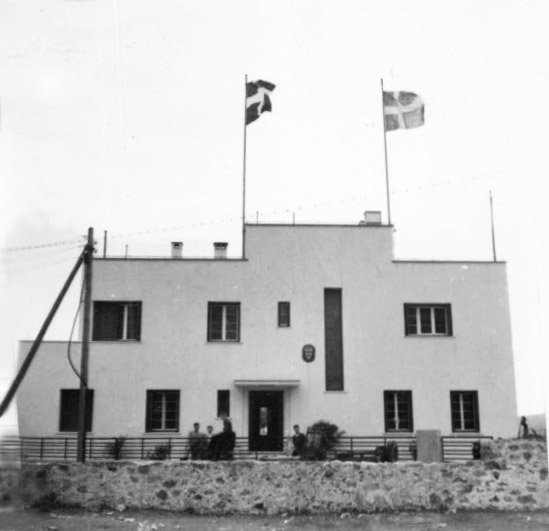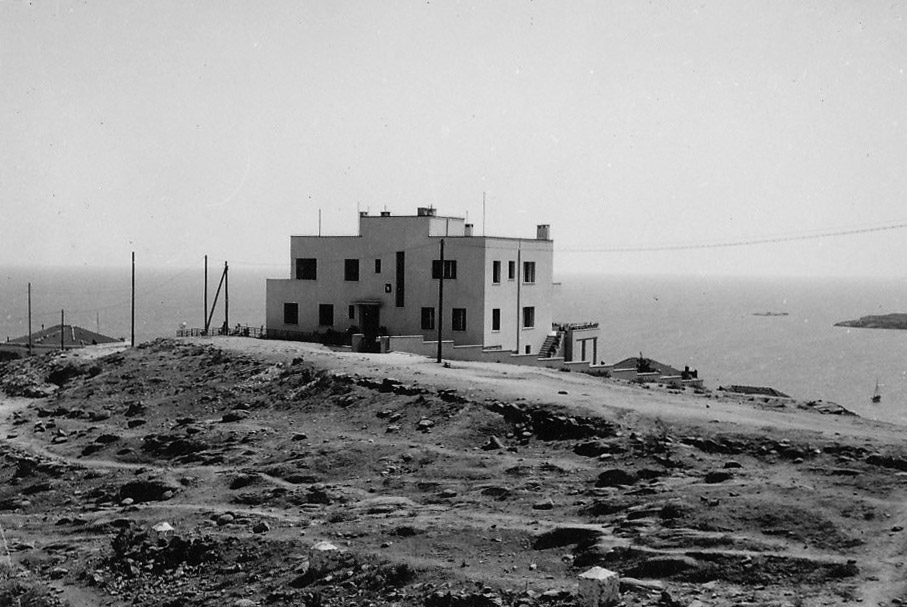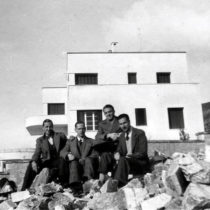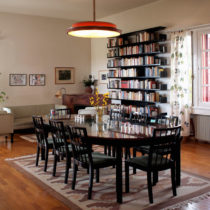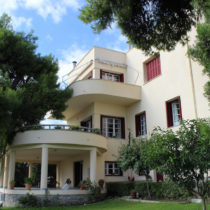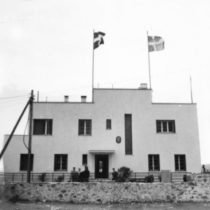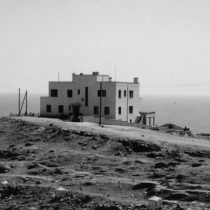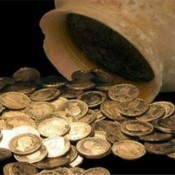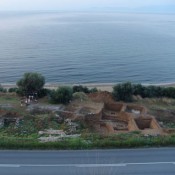‟Swamped” by cement apartment blocks in the Aghioi Anargyroi district and built eighty years ago, it is perhaps the last remaining building to remind the visitor of how grand the city was at the end of the 19th and early 20th century. The Swedish House of Kavala is impressive in its severe architectural style, built on a hill with an unimpeded view of the bay. Eighty years on, thanks to this house, the city of Kavala continues to be a reference point for very many Swedish artists who are guests in a place that is full of memories, luxurious but simple, bathed in sunlight and with a garden of unusual beauty, full of dozens of flowers, fruit trees, ornamental plants and a rare variety of vine.
The curator of the Swedish House of Kavala, Elisabeth Gullberg Kaidi, opened its doors and talked to the Athens and Macedonian News Agency about the historical events that left their marks on it and the strong ties of friendship and cooperation between Sweden and Kavala. She described the memories of the people that stayed there and also discussed how Swedes in the early 20th century regarded this Swedish “out post” in a small provincial city in Northern Greece with a port on the shores of the Aegean.
The Swedish interest in Kavala tobacco
The Swedish Limited Liability Company, Svenska Tobaksmonopolet, a Tobacco Monopoly, was set up in 1915 to raise funds for the public treasury, so as to finance a reform in the pension system, and to cover increased defense expenditures resulting from the First World War. At that time it was fashionable to smoke cigarettes with the addition of oriental tobaccos and so demand was great. This variety was cultivated in many parts of Greece, Turkey and Bulgaria, as their soil and climate favoured its growth. At the beginning of the last century Kavala was described by tobacco experts as the capital or the “Mecca” of tobacco. In 1910, 61 trading houses had settled in the city and only just over half of them were Greek.
‟Large quantities of raw tobacco”, Elisabeth Gullberg Kaidi notes, “were transported from the surrounding villages to Kavala. Then the tobacco had to be stored, sorted and processed to be finally loaded onto a cargo ship and exported. It is estimated that in the 1930s, 15,000 workers were employed in the processing of tobacco in Kavala. The Swedish Tobacco Monopoly was one of the many foreign trading companies supplying raw tobacco from the neighbouring regions of Kavala and hundreds of tons of Greek tobacco were exported to Sweden annually The demand for oriental tobacco (“basma”) increased in the 1930s and consequently, the Monopoly was doing very well. Given that representatives sometimes needed to stay in Kavala for several months, to follow the lengthy process from the market to the final product, a permanent residence was needed for the company’s manager and employees.
David Larsson, the designated tobacco expert and supplies manager of the Swedish Tobacco Monopoly, describes his meeting in 1930 with one of the tobacco merchants in the latter’s office: ‟Your glance skims uncertainly over the sofa’s leather, which after a moment’s confusion you find is artificial, you then look up at the clumsy, roughly painted beams of the roof more suited to a transport office and which, in my view as a Scandinavian, do not correspond to an environment dealing in work that is worth millions”.
At that time, many foreign trading houses had already built residences, offices and warehouses in Kavala, which made up a feature of the city. These buildings often followed the architectural style popular at that period in every country of origin, being often impressive and expensive. Some of these exist even today, such as the official residence of the Hungarian trading house created at the end of the 1890s by tobacco merchant Pierre Herzog and which at present functions as the Town Hall.
Although Sweden had been importing tobacco from Kavala since the 1920s, it delayed erecting a Swedish building in the city. It was only in 1934 that the first plot of land was purchased, so the Swedish Tobacco Monopoly was the last foreign trading house to erect its building in Kavala. The Swedish House, however, already stood out among the other foreign residences because of the choice of its site. While the other trading houses preferred the city centre or the port as places for their offices and official residences, The Swedish Tobacco Monopoly chose a plot situated high above the city with a panoramic view of the Aegean, in a district that at that time was almost uninhabited.
The architectural features of the Swedish House
The original architectural designs were done by architect Emil Lindqvist, who had already made many designs for the Monopoly. His designs however did not look much like the final ones created by Greek architect Panagiotis Manouilidis (1894-1977). The latter had studied designs of modern Swedish houses which at that time were often influenced by the modernism of the Bauhaus in Germany. Unlike the buildings of the rest of the foreign trading houses, the Swedish House had all the typical elements of the most modern architecture of the period: a plain, bright façade, a flat roof and an interior with a practical layout and generous living space. The large sitting room and five bed rooms for the employees were on the ground floor and the private apartment of the director or permanent representative was on the first floor. The ground floor, which today houses the curator’s office and private apartment, had and still has direct access to the big garden.
“The Swedish House in Kavala,” points out Elisabeth Gullberg Kaidi, “is one of the few well-preserved examples of Functionalism or the Bauhaus school and was built during the interwar period in Greece”. In his 1986 article in Hellenika magazine, architect Hans Broberg, who studied the building’s history, writes that following a detailed study of the plan, he discerned how closely the house is associated with Swedish villas of the early 1930s, such as those by Sven Markelius.
Collaboration with the Greek tobacco trading house of K. Petridis and Sons
Tobacco trader Konstantinos Petridis originally came from Constantinople and headed a family business that had already been trading tobacco in various places since 1828. The business had been passed down from father to son, according to the customs of the time, and was established in Kavala after 1913, when eastern Macedonia was incorporated into modern Greece. Cooperation with the Swedish Monopoly began in the mid-1920s when the sons Miltiades and Demetrios Petridis took over the business. Miltiades Petrides played a decisive role in the building of the Swedish House, as seen by documents of that era. It shows that he helped both in purchasing the land and assigning the project to the architect Manouilidis. The Petrides family maintained a close and long-lasting relationship with the Swedish employees stationed in Kavala.
The difficult period of the Bulgarian occupation
In his article “Two journeys to Kavala”, Sten Backman, an employee of the Tobacco Monopoly, describes his dramatic experiences in Kavala during the war. Backman left the House just a few weeks before Germany invaded Greece in April 1941. In September of that year he returned to Kavala, now annexed to Bulgaria, an ally of Germany. Backman describes his return to a city where all the signposts were now in Bulgarian and the drachma currency had been replaced by the Bulgarian lev. But that was just the start of everything Backman would become an eyewitness to during his eighteen-month stay in the city:
“Little by little, Kavala had to operate without electricity and running water. Each month food and fuel became scarcer and more and more expensive. The winters were unusually harsh. Over long periods of time means of transport and communication were non-existent. The persecution of the Jews followed and population displacement, as well as forced labour for thousands of Greeks”.
Backman also describes Greek schools being banned and Greeks forced to pay extremely high taxes on their property. In addition, they were banned from doing business, and were only allowed to work as labourers in their own tobacco warehouses. In the evenings there was a curfew and there was no shortage of house raids and other kinds of harassment. A ray of light, witnessed by many residents of Kavala, was that the Swedish House, due to its diplomatic status, was not obliged to raise the Bulgarian flag next to that of Sweden. It goes without saying that the Greek flag was forbidden. Since, however the latter’s version of that time differed only from its Swedish counterpart in the colour of their crosses, it was not obvious from a distance whether the flag flying on the roof of the Swedish House every Sunday was Greek or Swedish. This is said to have been a source of hope and consolation to the people of the city.
Despite the horrors of the war, the Swedish Tobacco Monopoly continued to import tobacco from Kavala, even though it was the Bulgarian and German authorities that decided with whom transactions were allowed. In the end it was impossible to carry on with this state of affairs and after 1943 tobacco ceased to be imported from Bulgaria and other regions under occupation.
Having left Kavala in 1943, Backman returned to the city just before Germany surrendered in May 1945. The House had remained almost deserted for those last two years, except for a staff of two Greek women, who courageously looked after it. The building was saved from looting and destruction, unlike many others in the city. Backman found members of the UNRRA (United Nations Relief and Rehabilitation Agency) settled the House “arbitrarily”, as he describes it, and he discreetly but determinedly searched to find them another place for their activities.
After the War – a new era
After the end of the war, the Swedish Tobacco Monopoly purchased less tobacco from Kavala. Cigarettes with oriental tobacco, that had formerly dominated the market, were replaced with American blends containing very little Greek tobacco. Imports decreased year by year and in the 1950s Thessaloniki took on the role once held by Kavala as the tobacco centre of northern Greece. The House was now unnecessary for the Monopoly and the solution was to chose between selling the building or changing its use. In 1957, when Olof Söderström became director of the Monopoly, a new era began in the House’s history. Söderström showed a great interest in cultural matters and saw the possibility of investing in this field and simultaneously improving the company’s image. On his own initiative it was decided in 1963 that from then on the House would be used as a guesthouse for Swedish artists and researchers, as well as a holiday resort for employees of the company. Scholarships of 2.000 Swedish kronor were established to cover travel expenses and at least four weeks accommodation for artists and researchers.
Between 1966 and 1974 a total of 87 scholarships were awarded, of which 51 to artists and others employed in the field of culture, and 36 to researchers. Those who did not receive a scholarship were given the opportunity to rent a room for 8 Swedish kronor per night.
The House, however, had never been a popular holiday destination for Tobacco Monopoly employees,, and when Karl Wärnberg was appointed director in 1970, it was found that the activity in Kavala required a lot of time, energy and money to be able to continue in the future. Perhaps one reason could have been the strong criticism the Monopoly had received in the Swedish press due to its granting residence scholarships in a country governed by a military junta and boycotted by the Swedish State. In 1973, Fred Fant, a Monopoly employee, was commissioned to consider the possibility of selling the building, which was impossible, since at that time exporting currency from the country was forbidden.
Thus, gradually, the idea took shape of donating the House to the Swedish Archaeological Institute at Athens. This proved complicated due to bureaucracy and the procedure dragged on for a long time.
The Swedish Archaeological Institute takes charge of the House
While the House was being used as a guesthouse by the Swedish Tobacco Monopoly, visitors were welcomed by Naum Tsiropoulos, a trusted caretaker who lived with his family in an apartment in the House’s basement. With the help of the Monopoly he had travelled to Sweden and had learned a little Swedish, while his wife Despina spoke French which made it simpler to communicate with the House’s Swedish visitors. Naum Tsiropoulos lived in the house till 1980, when an illness forced him to resign from his job. Thomas Thomell, a librarian in the Swedish Institute at Athens, was then asked to go to Kavala to welcome the visitors expected in the spring of that year. Thomas ended up by staying 27 years and played a very significant part in the development of the House activity and in what it represents today.
Since Thomas Thomell became curator of the House, there has been a gradual increase in visitors. In 1983, the Swedish Writers’ Association (Författarförbundet) established eight monthly scholarships a year for its members, a tradition that has continued since then. The Swedish Designers Association (Svenska Tecknare) followed in 1990 and the Swedish Photographers Association (Svenska Fotografers Förbund) in 1997. Since then, the last two have been offering five residence scholarships annually.
The House was in great need of maintenance when it was acquired by the Swedish Institute. Due to lack of funds for its complete maintenance, the Institute’s Board of Directors initiated a discussion for its sale. There were strong reactions, mainly from earlier visitors, and pressure was put on the government to find resources to continue the House’s activity and avoid its sale. This resulted in the government spending 225,000 kronor from the 1985 budget on its maintenance. Subsequently, maintenance work was secured with the financial support of private institutions.
At the initiative of earlier visitors, headed by Hans Nestius, the Association of Friends of the Swedish House of Kavala was established in 1984. The purpose of the association was to prevent the sale of the House by providing information about the guesthouse so as to increase its visibility and raise funds from various institutions to meet the maintenance needs. So far, the Association has provided great support for the House’s activities and over the years has funded many works related to its furnishings, paintings and garden.
In 1984, with the help of architect and singer Argyris Bakirtzis, the house and land were declared protected through listing by the Greek authorities. Reasons for its listing were, among others, that ‟it is a typical example of the Bauhaus school and reflects the architectural trends of the interwar era”. The House of Kavala, however, is not just an excellent example of Functionalism or Bauhaus at its best, but it is also unique because it has only been slightly modified, retaining many of its original furnishings and decoration details. Much of the furniture from the period of tobacco trading had been provided by the Nordiska Kompaniet (ΝΚ) and bear ‟identity” numbers on bronze labels.The dining room furniture and much more were designed by Axel Einar Hjort, head architect of NK in the period 1926-1938.
The Swedish House and Kavala as a source of inspiration
During the time the Swedish House operated as a guest house, a significant number of books were written by visitors. Among them are books of science and literature, as well as a large number of articles, papers and scientific studies in various fields. Many of these are in the House’s library, which currently numbers around 2,500 titles, also to be found online in the Nordic Library at Athens. The House has also inspired a series of albums and visual art exhibitions, showing both the uniqueness of the place and its atmosphere and how it stimulates creativity in a variety of areas.
Apart from the House being an oasis for writers and other artists, its purpose is also to enhance cultural exchanges between Sweden and Greece. Over the years these exchanges have taken place through a continuous collaboration with the Municipality of Kavala, leading to a series of cultural events with participations from both countries, such as sculpture symposiums, painting and photography exhibitions, concerts and translation and poetry symposiums.
Says Elisabeth Gullberg Kaidi: “During the last 40 years that the House of Kavala has been the property of the Archaeological Institute at Athens, it has been home to almost 6.000 visitors. There are no longer plans today for its sale or for cutting down on its activities. Thanks to these, the Institute comes into contact with more circles of Swedish society than it does through its research and education on ancient Greece which is the core of its work in Athens”.
Many visitors have written or spoken about the motivation, inspiration and creativity they have experienced during their stay in Kavala. Johanna Norin, grant holder from the Swedish Photographers Association for the 2015 April-May period, describes her first visit to the House as follows: “In the arrivals hall I see a handwritten notice with the words Swedish House vila held up by a man talking on a cell phone. It is dusk, and the taxi departs from the airport to Kavala along the coastal road. We talk about Greece, the Greeks and the country’s crisis. With a heavy suitcase full of notes, blank drawing pads, books that inspire me and colorful design prints, I arrive to silence and a seductively beautiful house. It is quiet and totally empty when I put down my bags and walk around on tiptoe to get my bearings. With keys in hand and tripping lightly, I descend the stairs talking to startled cats and find a grocery store selling feta cheese in bulk. It is wrapped in grease proof paper and secured with a rubber band. I also buy a Greek beer thanks to the label. And olives of course. The steps on the way up and the ascent are impressive. Happy voices fill the silence. Some people return home after eating out and introduce themselves. The House of Kavala is not only a romantically beautiful one, but so are the people staying in it, who bring it to life when you are there; the scholars, researchers, writers, or artists you jostle with round the kitchen shelves and share the retsina or frying pan with. The House of Kavala is the tranquility, the verandas with a view of the sea, discussions in the kitchen, the library with works left by previous guests, communal meals, the sound of the bell of the church opposite ringing early on Sundays, the bulletin board with ideas and proposals that can lure you away from you work if you want to”.
